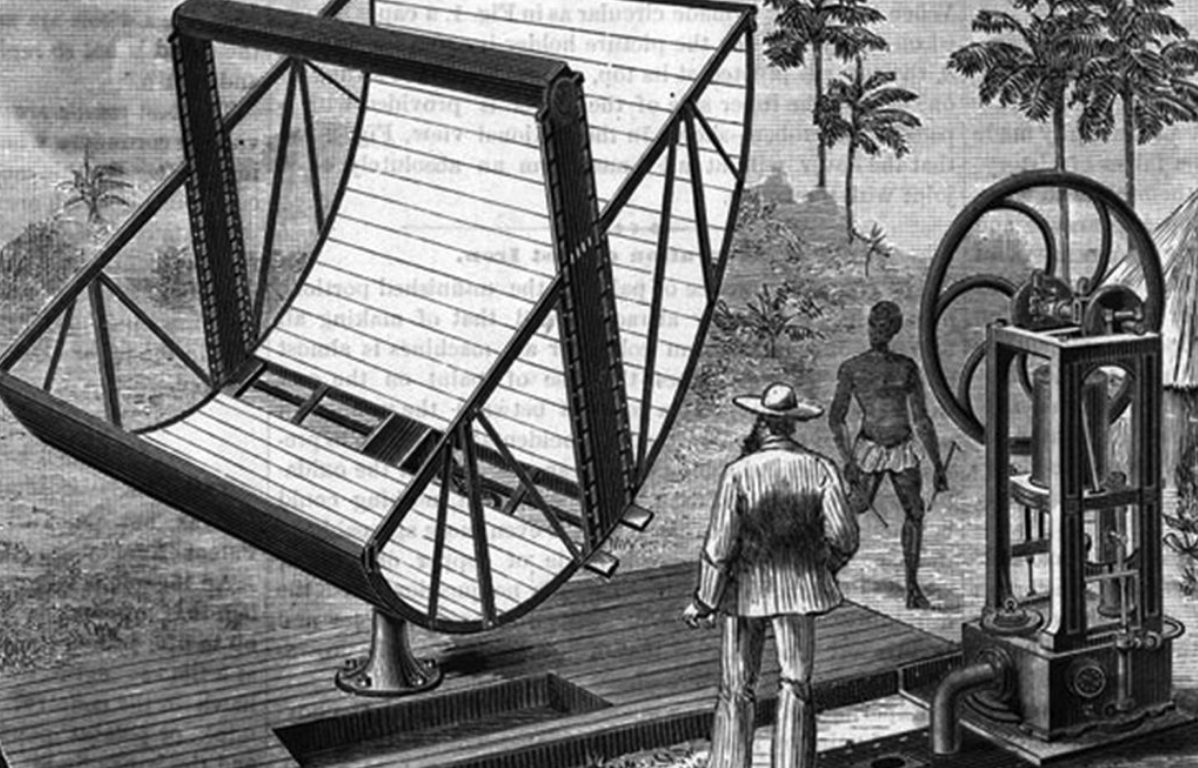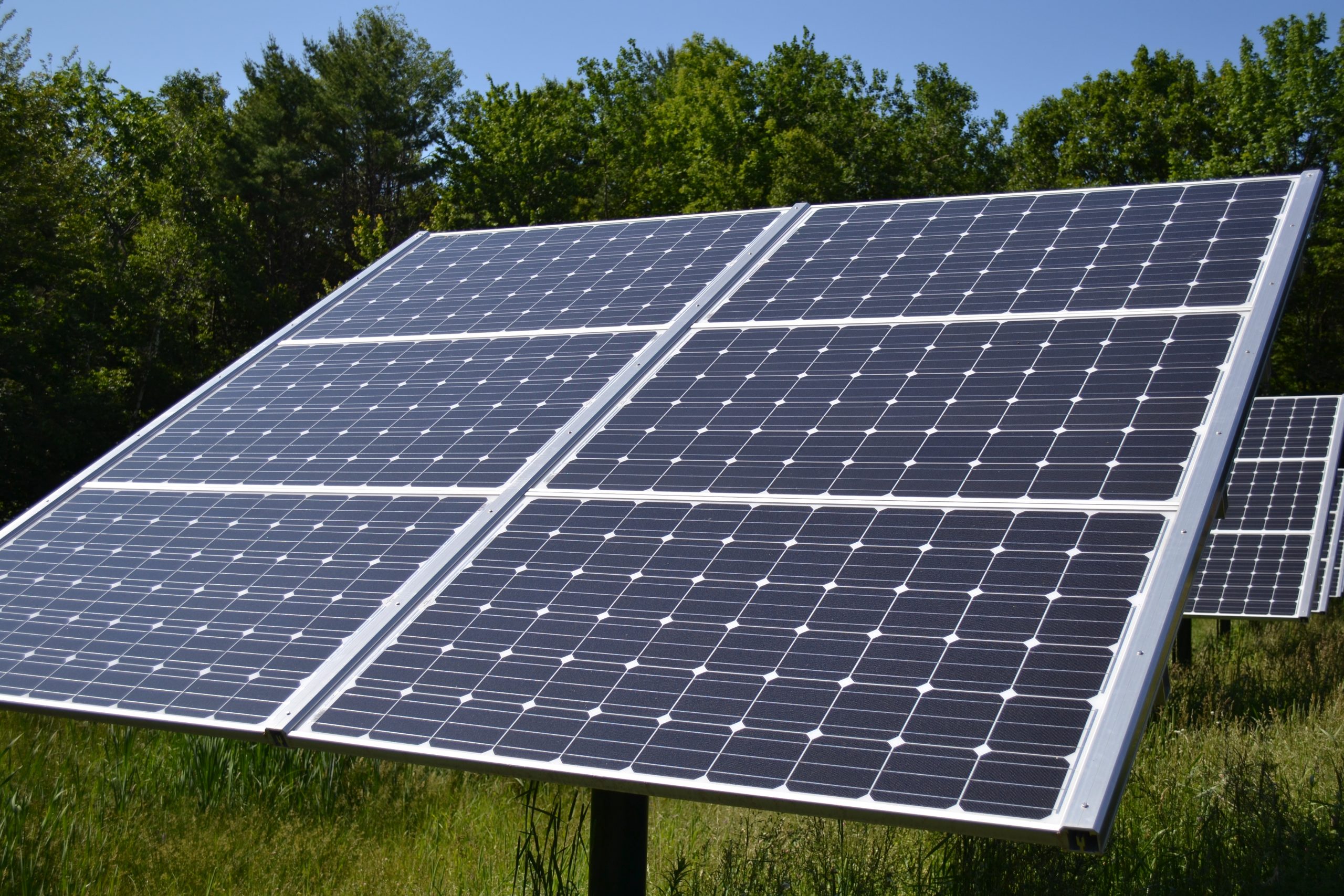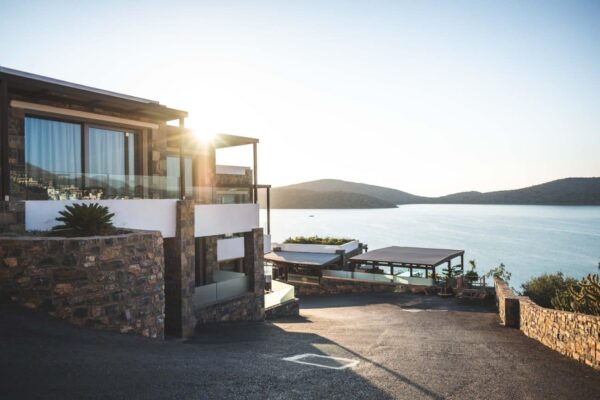Solar energy has become the best alternative to save on our electricity bill and for the production of hot water. Solar panels are indispensable to enjoy this clean and free energy in a detached or semi-detached home, or business. In this month’s article, we will get to the way it works, the requirements for installations as well as talk about important information related to current permits and regulations.
When were solar panels invented?
Our species has always realized the importance of the Sun itself, its light, and the heat it produces. Hence, pinning down the specific moment where solar energy was discovered is rather hard. In both Ancient Egypt and Greece, people used copper or silver sheets to reflect the sunlight. Romans were the first to use glass window panes to ensure that lighting would go through them while heat would stay inside their homes. And just like these, there are many other small advances related to taking advantage of solar energy that continue to our day and will do so into the future.
The actual development of solar and thermal energy happens after the ’70s of our previous century.
Technological advances mark the history of solar energy being used to generate electricity or hot water, making it grow in a slow but steady manner. In 1838 French physician Alexandre Edmond Becquerel discovered the photovoltaic effect. Despite that, it was Albert Einstein who realized the background physics of the photoelectric effect in 1905. From then on, many other discoveries have pushed the development of this technology forward.
Charles Fritts developed the predecessors of our current solar panels in 1883. He set the basis for future investigations of the photoelectric effect. Solar cells based on Silicio are relatively new. In 1954, an investigation team from the Bell corporation (founded by Alexander Graham Bell) developed the first solar cell with a 6% efficiency.

What is solar energy exactly?
Solar irradiation is an unlimited source of energy that comes from the Sun. Solar panels can turn it into electric or thermal energy. This energy is free from pollutant residues, making it one of the best alternative energies to counteract CO2 emissions, greenhouse effect gases, and other pollutants produced by fossil fuels such as gas, oil, and coal.
The energy produced through solar panels can be used the same way as the one we obtain from the electric network. We can use it for electrical appliances, automated aspects of the home, and even heating systems such as boilers or air conditioning.
There are numerous advantages when it comes to the installation of solar panels against other energy production methods. These are some of the most important ones:
- Saving in the electrical bill or heated water production: Free energy production, free from taxes, and unlimited.
- Independence when it comes to varying light prices.
- Reduction of CO2 emissions and green energy production
- An advantage in taxes thanks to the subsidy given to self-consumption
- Solar panels have simple technology, so their maintenance is simple as well.
- Photovoltaic energy is one of the safest kinds.
In Spain, direct solar radiation values vary from 1.26 to 6 (kW/m2 a day). This happens during December and July respectively, resulting in a production of 0,246 and 1,184 kW/m2 a day thanks to the 20% efficiency available in current solar panels. Therefore, a home with a surface area between 10 y 30 m2 available for the installation would be able to self-consume more than 80% of its yearly energy consumption.
Different types of solar pannels
Not all solar panels are the same, nor do they do the same. These are the three currently main types of solar panels:
- Photovoltaic solar panels
- Thermal solar panels
- Hibrid solar panels (photovoltaic + thermal)
In the following paragraphs, we will briefly explain how the different solar panels work:

Photovoltaic solar panel
The photovoltaic solar panel is in charge of transforming energy coming from the Sun into electricity. This solar panel generates power through solar energy.
Interconnected photovoltaic cells are encapsulated and framed afterward to use them in a photovoltaic installation.
Photovoltaic cells transform light energy (solar energy in this case) into electrical power through the photovoltaic effect. This enables you to take advantage of solar energy and produce your own, saving on your electrical consumption.

Thermal solar panel
This second type of solar panels transforms solar energy into thermal energy, heat.
Whether they are used at domestic levels or industrial, thermal panels have multiple functions. They are used in heated pools, for sanitary water, and produce steam, amongst many others.

Hibrid solar panel
In this case, the hybrid solar panel is a combination of a photovoltaic panel together with a thermal one. Since these two technologies work together, these panels produce both electricity and heat simultaneously.
Though these solar panels are unknown to many, they are becoming increasingly popular given the advantages they offer against photovoltaic panels and thermal ones when they are separate.
Their main advantage is the reduction of needed space to obtain solar energy. When two panels become one, the room they take up is half. Therefore, these panels are becoming the perfect alternative for spaces with limited roof surface such as hotels, heated pools, or homes.
The pricing of these panels is becoming more and more affordable. This benefit added to the previously mentioned ones makes them a great clean alternative for electricity production (or part of it) and hot water in our homes or public spaces such as hospitals, businesses, or schools.
In the upcoming articles, we will get into more detail about each type of panel, their subcategories, and more specific characteristics about them. Also, we will talk about their advantages and disadvantages as usual.
Different solar panel installations
The Real Decreto 244/2019 of April 5th, 2019 simplified self-consumption installations into two methods.
Self-consumption installation connected to the electrical network
In these cases, the photovoltaic installation produces electricity while the user remains connected to the electrical network. Thanks to this installation, you can still obtain power from the electrical network when the solar panels are not producing it.
Isolated self-consumption installations
In isolated photovoltaic installations, the consumer is not connected to the electrical network at all. The energy created by photovoltaic modules is the only energy supply. These installations tend to be accompanied by a group of batteries where the energy surplus is stored.
Installation of solar panels in homes connected to the electrical network has become a chance of investment with a return of 10% for the following 25 years. If you have high power consumption, or you want to save money on your light bill and happen to have roof surface available, installing solar panels might be your solution.
How should solar panels be installed?
Since the self-consumption system of solar panels requires an economic investment, getting to know its functioning and steps of installation thoroughly is of great importance. This will guarantee the correct functioning of the solar panels for the 25 years following.
If you want to ask for a budget for the installation of solar panels, you can contact us at GRUPO PAGÈS BCN where we will evaluate the following factors:
- Size of the home and roof: orientation, inclination, and type of home.
- Current electrical consumption and hired power, as well as the type of heating system.

Where can solar panels be installed in the home?
The installation of solar panels in homes currently rules the self-consumption market thanks to their short-medium term profitability. A photovoltaic installation can push up the value of our home both for selling it or for renting. Tenants will see their light bill reduce significantly.
For this installation to happen, we need to have free surface space on our roof or ground of 20-30m2. This surface should be free of shade both at the moment of the installation as well as during the years while the solar panels will be active.
What factors do I need to keep in mind for the installation of solar panels?
- Solar panel placement. Placing solar panels in our home’s roof avoids shadows as well as prevents damages and residue accumulation.
- Orientation and inclination. Installations facing south inclined at a 30º angle take more advantage of solar radiation.
- Geographic location. Photovoltaic installations located in the south of Spain will get 20% more solar radiation than those located north, affecting the number of solar panels needed in each.
Permits and regulaitons on self-consumption installation: Real Decreto 244/2019
On April 6th of 2019, minister Teresa Ribera published the RD 244/2019, from April 5th, which regulates administrative, technical, and economic conditions on self-consumption of electrical energy. This Royal Decree collects measures that beat the stagnation of self-consumption, caused by the RD 900/2015, published six years ago, and the famously known “sun tax”. This new regulation also collects measures that simplify the installation of solar panels while also allowing new installations, finally setting compensation for surplus through the net balance.
Starting a few years ago, the production of renewable energies for self-consumption has become completely tax-free. Therefore neither the “sun tax” nor the 7% tax for energy production are applied.
The permits and applications referring to the installation of self-consumption became simpler after RD 244/2019 was published, which has increased economic savings and made the installation process easier.
The main prerequisites for the installation of solar panels are:
- An adequate roof. It should be in good condition and have an adequate orientation towards the sun.
- Meet regulations and have necessary permits for installation
GRUPO PAGÈS BCN is here to assist and help.Contact us if you face any doubts related to the prerequisites to install solar panels in your home. Our experts are knowledgeable in all the necessary requisites of a self-consumption photovoltaic system or the installation itself.

Self-consumption as a key element in Passivhaus projects and passive homes
Passive homes, and the Passivhaus (in the article “Una vivienda pasiva y el certificado Passivhaus” we talk about the differences between passive homes and the Passivhaus certificate)” have excellent thermal insulation, control of any water infiltrations, and high quality and control of external air. The design and purpose of these buildings make the most of the resources in their environment, adapting to the client with the lowest environmental impact and energy dependency possible.
Photovoltaic self-consumption tends to be one of the key elements of these types of projects. The elements in a passive-home, such as thick insulation, low-conductivity windows, low emission double-glazing windows with internal air chamber, transpirable and waterproof panels, double-flux mechanical ventilation, high-efficiency installations of renewable energy, etc., reduce energy consumption between 70% to 90% compared to conventional buildings.
This is a real-life example of a 200m2 home using aerothermal energy and hybrid solar panels:
REFERENCIAS
WIKIPEDIA. Panel Fotovoltcaico http://bit.ly/3fbCcaC
SELECTRA. ¿Cómo instalar placas solares y cuánto me cuesta? http://bit.ly/2NOAaSG
HOGARSENSE. Marcos Carbonell. Historia de la energía solar https://bit.ly/39bgW13
ENDEF. Tipos de paneles solares. Energía solar para principiantes https://bit.ly/3f9vhyK
ORGANIZACIÓN INDUSTRIAL. Energía solar para calefacción activa y pasiva http://bit.ly/3lHQalT






